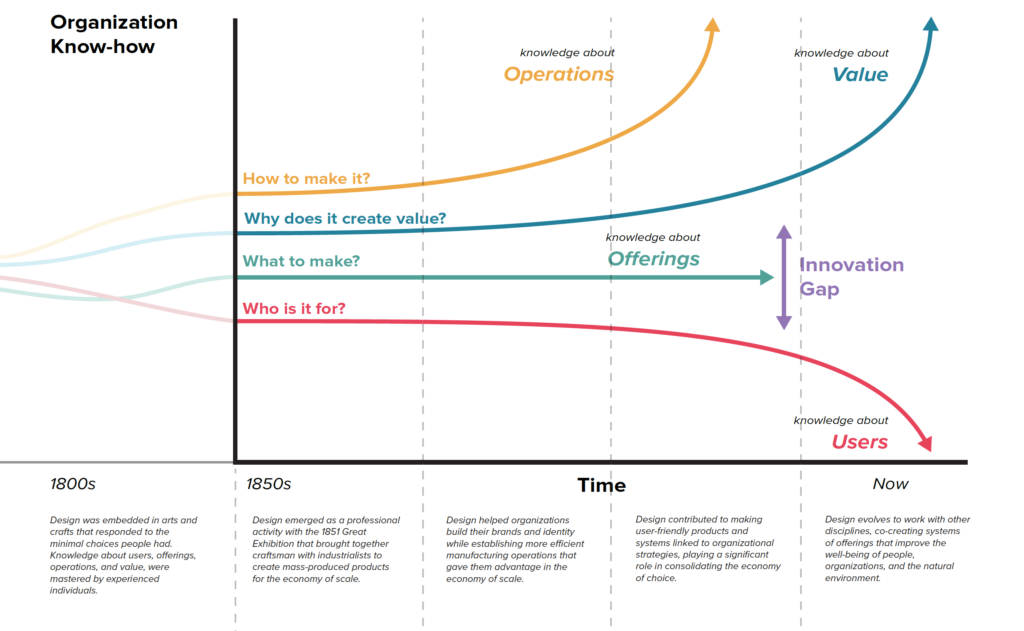The rise of mass production and mass markets in the 20th Century required the creation of large factories, distribution channels, media, and government policies to manage the speed, scope, and scale of modern businesses. Market segmentation to understand users, industrial engineering to manage production and distribution, and financial models to show how money can be made, all were inventions that helped organizations predict what to make, making them the primary agents conditioning how people lived, learned, worked, and played.
As a growing number of organizations competed for the attention and money of a rising middle class, they made more o erings that were different in several ways. Some of the most common di erentiating factors were price, quality, functions, features, and style. Greater choice was enabled by the confluence of flexible production, container shipping, undersea ocean cables, satellite communications, and eventually the Internet.
